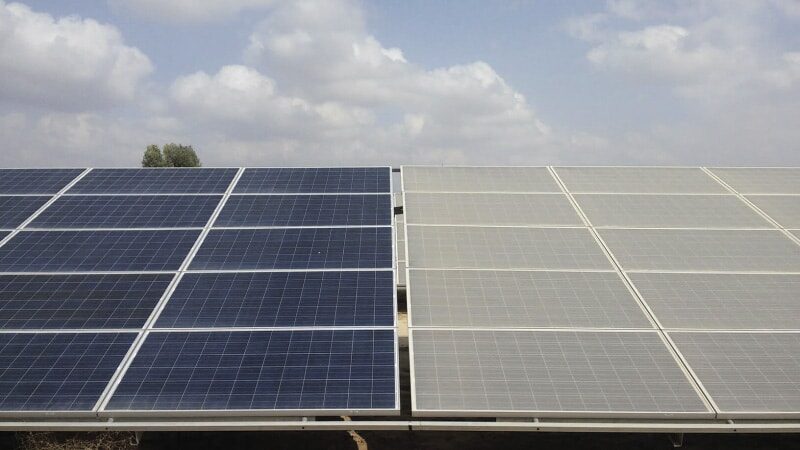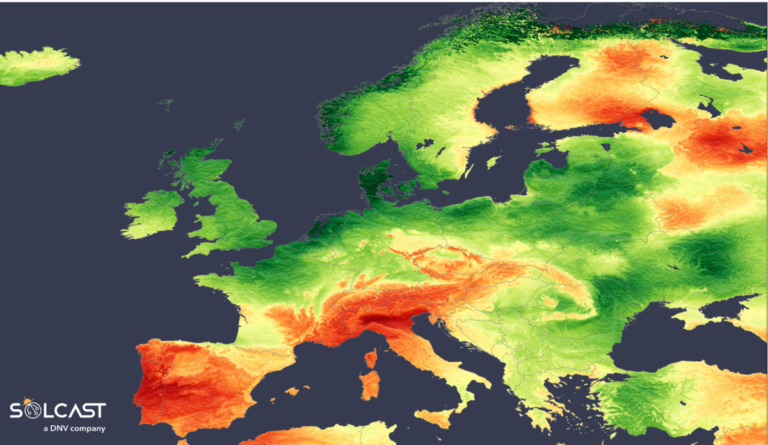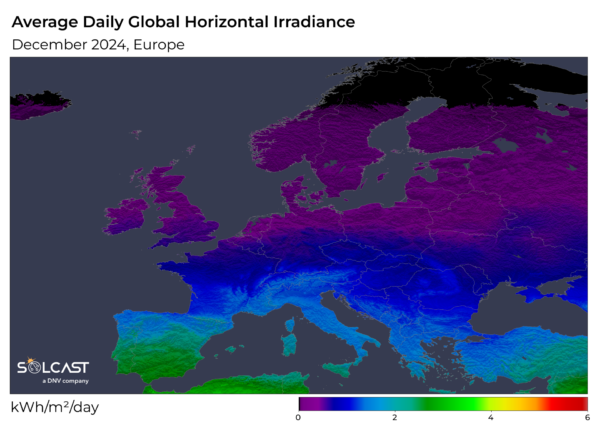In a new weekly update for pv magazineSolcast, a DNV company, reports that December brought striking contrasts in solar radiation across Europe, with northern Europe experiencing radiation levels up to 30% below the already weak seasonal average, while regions south of the main mountain ranges of Europe saw radiation levels of up to 30%. above typical levels.
December brought striking contrasts in solar radiation across Europe, with northern Europe seeing radiation levels up to 30% below the already weak seasonal average, while regions south of Europe’s main mountain ranges saw radiation levels up to 30% below was above normal levels, according to an analysis using the Solcast API. The pronounced variability, common in the winter months in Europe, was caused by an unusual northerly jet stream that changed weather patterns, resulting in strong regional contrasts.
Northern Europe experienced one of the cloudiest Decembers in recent years, with insolation falling as much as 30% below the long-term average. The northern location of the jet stream allowed the Azores High to move further north than normal, driving a series of low-pressure systems.
over Northern Europe. This configuration caused persistent cloud cover in France, Great Britain, Germany, Poland and the Baltic states. Because insolation was already limited by the short winter days in December, the additional cloud cover reduced the solar potential to remarkably low levels
in these regions. Despite the sharp percentage decrease in irradiation, the absolute impact on solar generation in the north was less significant due to the already low winter baseline values.
The Iberian Peninsula and Northern Italy, on the other hand, experienced a remarkably sunny December. The Pyrenees and the Alps acted as barriers, protecting southern Europe from the northward-shifting storm track. This naturally distributes the trapped cloud cover and precipitation in northern Europe, leaving Portugal, western Spain and northern Italy to bask in relatively clear skies. In these areas, irradiance reached 30% above the December long-term average, providing a much-needed boost to solar energy potential.
Further east, the Eastern Mediterranean faced its own weather-related challenges. Low-pressure systems in the region pushed moisture and clouds onto land, leading to a mild reduction in insolation. Although the effects were less severe than in Northern Europe, insolation levels in parts of Greece, Turkey and surrounding areas fell by as much as 10% below the December standard.
Solcast produces these figures by tracking clouds and aerosols worldwide at a resolution of 1-2 km, using proprietary satellite data AI/ML algorithms. This data is used to drive irradiance models, allowing Solcast to calculate high-resolution irradiance, with a typical deviation of less than 2%, as well as cloud tracking predictions. This data is used by more than 300 companies that manage more than 150 GW of solar energy worldwide.
The views and opinions expressed in this article are those of the author and do not necessarily reflect those of the author pv magazine.
This content is copyrighted and may not be reused. If you would like to collaborate with us and reuse some of our content, please contact: editors@pv-magazine.com.
Popular content





